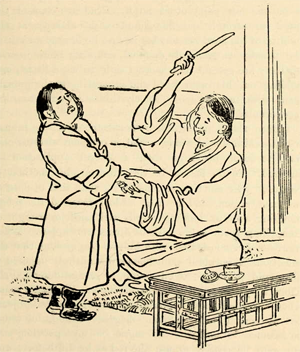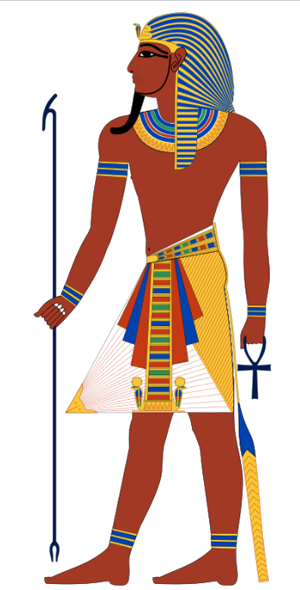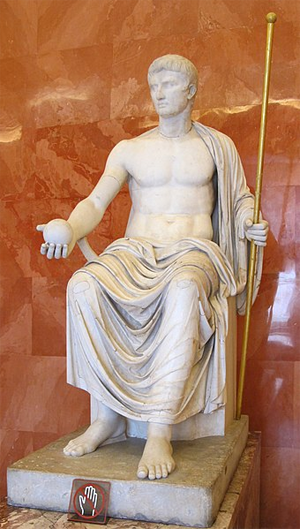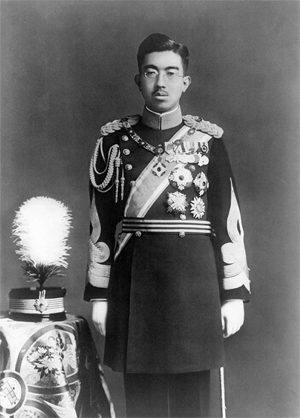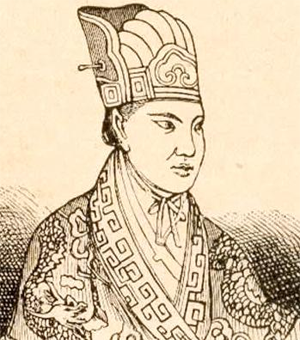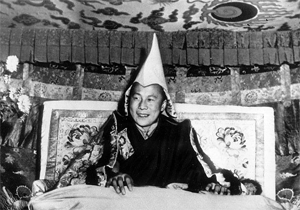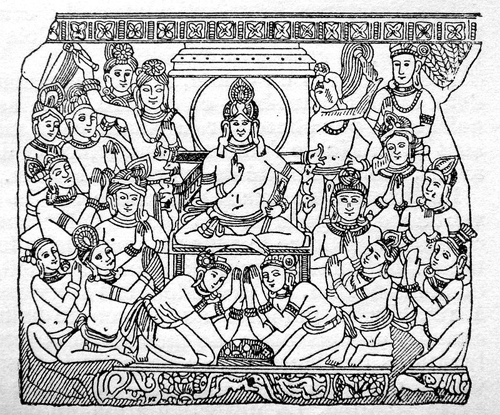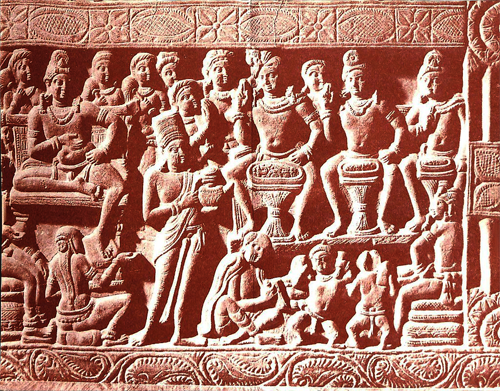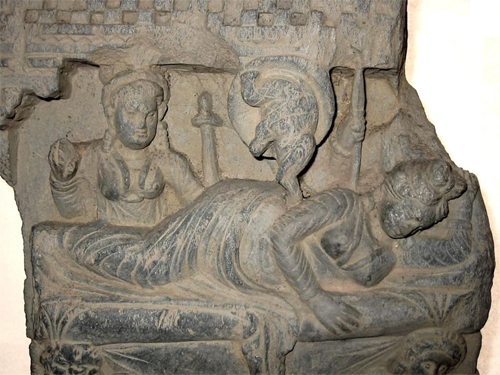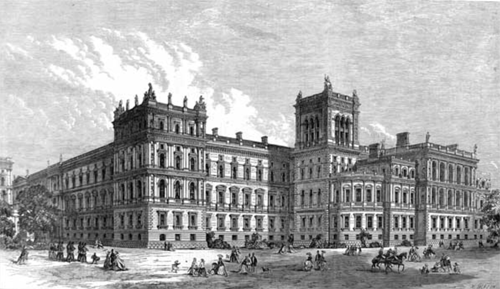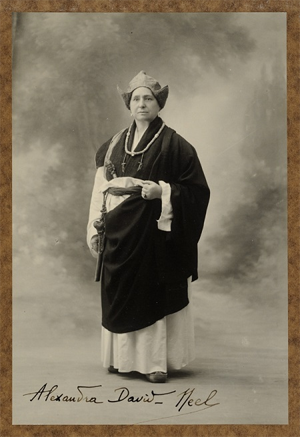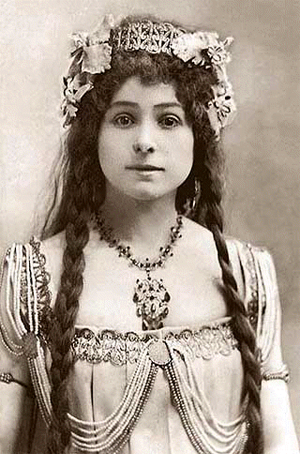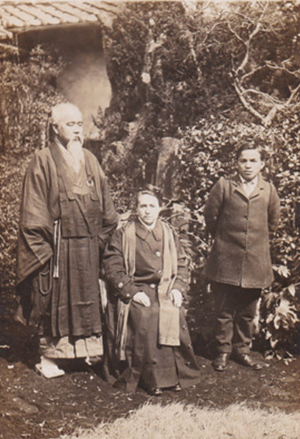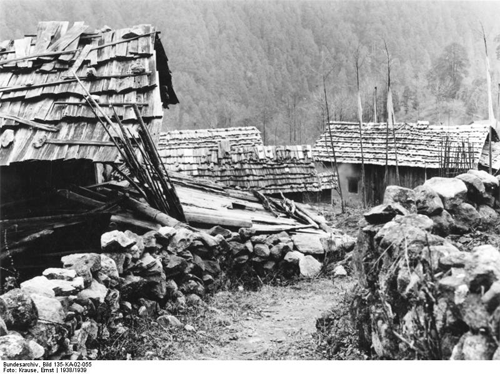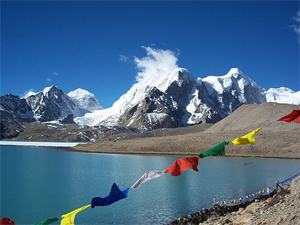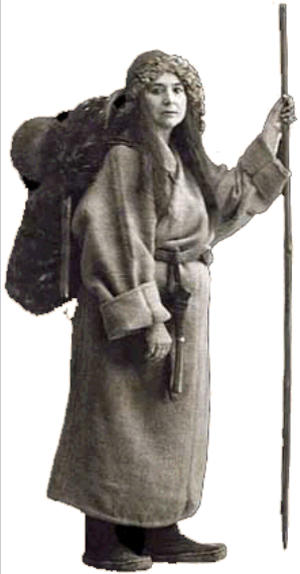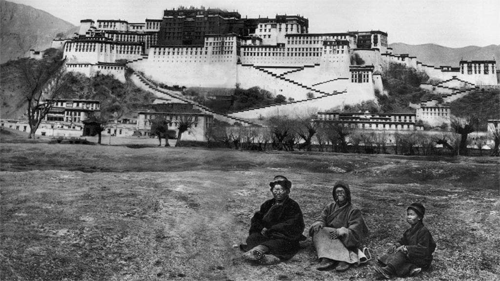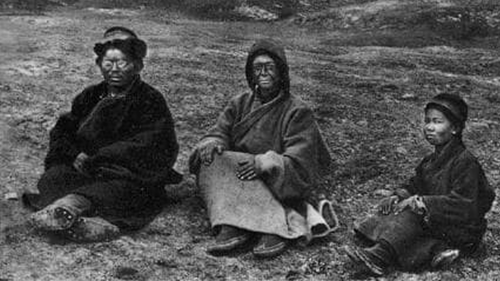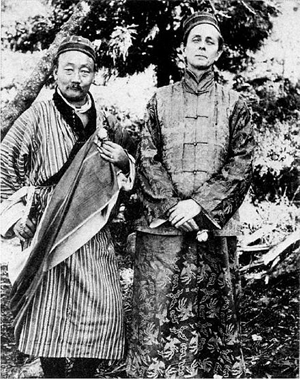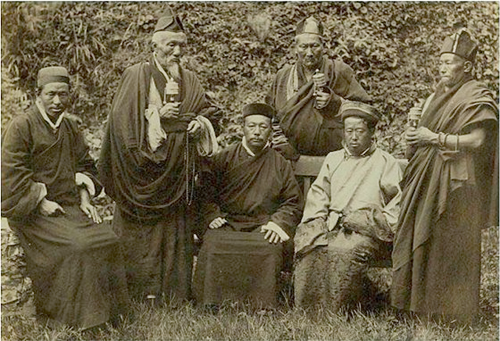Re: Freda Bedi, by Wikipedia
A Matter of Fact
by Alfred P. Rubin
The American Journal of International Law
Vol. 59, Issue 3, pp. 586-590
July, 1965
NOTICE: THIS WORK MAY BE PROTECTED BY COPYRIGHT
An article in a recent issue of the JOURNAL which presented an Indian perspective on the India-China border dispute1 demonstrated the weaknesses as well as some strengths of the Indian position. My own views as to relative strengths and weaknesses of the positions of India and China in the border dispute at an earlier stage have been published elsewhere2 and I do not propose to repeat them here. However, a short summary of Professor Sharma's mistakes of fact might be appreciated by the legal community.
A. Eastern Sector
It is incorrect to say that Tibet was "an independent state under the rule of the Dalai Lama before it became a vassal of China."3 The temporal power of the Dalai Lamas is normally considered to have begun as a donation from Kublai Khan, a Mongol Emperor of China, in the thirteenth century.4 There does not seem to exist any document or recorded statement that can properly be called a "declaration of independence in 1912" issued by any Tibetan authority.5 The first official assertion that one existed, so far as I have been able to discover, was in 1950.6 There is ample evidence that whatever statements were issued in 1912 (or at any other time until the 1940's) fell far short of claiming "independence" of China.7
Tibet for at least 100 years prior to 1914 did not have "freedom to make agreements with other peoples" or "freedom to conduct foreign relations."8 Although Tibet had some authority to speak internationally, there is no evidence that this authority in the field of foreign relations could properly be exercised independently of a Chinese delegation. While there are many international agreements in which both China and Tibet appear as parties on one side,9 there is no reason to regard this system of dual signature to documents with effects only in the remote fringes of her Empire as negating the demonstrable necessity for a Chinese signature on the documents. "With the exception of the 1856 Treaty with Nepal, none of the agreements cited was concluded without very clear Chinese participation.10 In the case of the Nepal Treaty the facts as to actual Chinese participation are not clear.11
The assertion that in 1914 Tibet was a state "recognized as such by China itself"12 is not supported in Professor Sharma's article by any citation of authority. It is generally accepted that China did not recognize any degree of rightful independence in Tibet at or near that time.13
Tibet did not have "clear competence" to confirm the validity of the boundary between Tibet and India in 1914.14 The fact that the Notes appended to the Simla Convention referred to Tibet as part of Chinese territory15 made the competence of Tibet far from clear and made the "genuineness" of the expectations of the members of the Simla Conference questionable with regard to the effects they hoped to claim as a result of the Simla transaction. Sir Henry McMahon, the British principal negotiator, has never before had naivete imputed to him in connection with this negotiation.16
Chinese official ratification of the Simla draft of April 27, 1914, was regarded by all participants at the Conference as essential to the conclusion of the attempted settlement, even though the Chinese negotiator had initialed it. After the refusal of Peking to authorize the conclusion of the Agreement on the basis of the draft of April 27, the British and Tibetans proceeded to alter that draft. The final draft of July 3, 1914, was never initialed by any Chinese, officially or unofficially. Yet even this draft contained the clauses indicating British reluctance to recognize Tibetan territorial independence of China, and thus Tibetan failure to insist upon such recognition.17 In these circumstances it is difficult to understand how the phrases "genuine expectations,"18 "factual acceptance,"19 "commitment,"20 and "mutual expectations"21 can be used to describe the results of the Simla Conference in any meaningful way.
It is not true that "at no time was sovereignty of the northern territory [of Assam] to the crest of the Himalayas . . . acquired by either the Tibetans or Chinese.''22 Parts of the Eastern Sector were under Tibetan control at the time of the first British investigations into the area.23 The tale of the drawing of the McMahon Line, and its deviations from ethnic, traditional, and even watershed lines has been concisely told elsewhere.24 These deviations appear to concern specific sections of the Eastern Sector, and thus general allegations as to the validity of the Indian position in some areas cannot properly be taken to support the Indian position throughout the area.25
It is not true, as asserted by Professor Sharma, that China has "acquiesced in the McMahon Line for over 45 years."26 On the contrary, it appears likely that the British authorities in India were not aware of repeated Tibetan assertions of right in the area on the Indian side of the McMahon Line.27
Of maps incorporating the McMahon Line the only one cited which was issued by the Chinese Government was the Postal Map of India of 1917.28 It has been pointed out elsewhere,29 that this map was based upon non-Chinese sources and was issued by a government department not concerned with boundaries in that area. More importantly, however, the Chinese have been able to cite as much, if not more, in the way of official maps issued by the Government of India to support the other side of the case in this Sector.30
B. Central Sector
Very little argument concerning the Central Sector is presented in Professor Sharma's work. The disputed areas, excepting the potential disputes over actual sovereignty in the denned areas of Bhutan and Sikkim, are small and economically and strategically of minor importance to both sides. It should be pointed out, however, that China at no time "clearly regarded the passes under discussion as border passes" in the treaty discussions of 1954.31 The treaty itself32 does not refer to the six passes in question as "border" passes, but says only that "Traders and pilgrims of both countries may travel by the following passes . . ."33 There is no question that the passes mentioned define known routes. It would thus appear that the Chinese acceptance of this ambiguous language in place of their proposal for language making it plain that the passes were in Chinese territory was, although a concession from the Chinese point of view, hardly an acceptance of the Indian version of the border in this area.34 There was, therefore, no "actual shared expectation" as to a border definition35 arising out of this transaction, since the Indian "expectation," however "actual," was certainly not "shared" by the Chinese, whose views had in fact been clearly presented.
C. Western Sector
Neither the 1684 Treaty nor the 1842 Treaty defines the portion of the bulk of the area in this Sector which is under dispute.36 There is no "demarcation" defining the portion of the area in this Sector which is under dispute.37 The deficiencies of the treaties38 are borne out by the fact that the 11 British attempts to define the "customary" border between 1815 and 1900 resulted in 11 different definitions involving at least 3 major basic patterns.39
The control and authority of India in the form of effective administration and jurisdiction have never prevailed "all through the Ladakh Sector" to the exclusion of effective Chinese administration and jurisdiction.40 As noted above, the British conception of the extent of their dominion in the Ladakh area was constantly changing during the 19th century and, in this almost totally unpopulated region, there appears never to have been either occasion or accident resulting in actual Indian assertions of right significantly more substantial than Chinese assertions before the construction of the Chinese motor road through Aksai Chin.
The Chinese claim in Aksai Chin does not rest upon the fact that a Chinese road, built in 1956-1957, was not discovered by India until "some months" later or upon any prescriptive right to the road itself as an easement.41 It purports to rest instead upon the same basis as the Indian claim: long undisturbed exercise of administration and jurisdiction. The earliest known recent practical use of the area by the Chinese was in their invasion of Tibet in 1950, not in the construction of their road.42 The Government of India did not discover the road until about a year after its completion—certainly more than two years from the time work on it began.43
D. Conclusion
The foregoing analysis does not support any part of the Chinese claim or deny the ultimate validity of any particular part of the Indian claim. It does, however, indicate the extent to which the Indian perspective has been achieved in disregard of the facts. Although this short comment is directed to an Indian exegesis, it is only fair to note that the Chinese position, exaggerated apparently to allow for the give-and-take of negotiation the Chinese attempted to begin in New Delhi in April of 1960, is also based in part upon misapprehensions of fact.
ALFRED P. RUBIN
_______________
Notes:
1 Surya P. Sharma, "The India-China Border Dispute: An Indian Perspective," 59 A.J.I.L. 16 (1965).
2 A. P. Rubin, '"The Sino-Indian Border Disputes,'' 9 Int. and Comp. Law Q. 96 (1960). Professor Sharma's criticism of this work in note 13 on p. 19 of his article is too grotesque to warrant comment. The interested reader may peruse the original to discern for himself the nature of Professor Sharma's distortion.
3 Sharma, loc. cit. 21, note 23.
4. W. W. Rockhill, "The Dalai Lamas of Lhasa and their Relations with the Manchu Emperors of China, 1644-1908," 11 T'oung Pao 2 (1910); G. Schulemann, Geschicht der Dalai Lamas 92 (Leipzig, 1958); H. E. Richardson, A Short History of Tibet 34 (New York, 1962). The fullest scope of temporal authority probably exercised by the Dalai Lamas before 1912 was from the donation of authority and establishment of their title by Gusri Khan in 1642 until the conquest of Tibet by the Dzungarians in 1717. At that point Gusri's heirs and possibly the deposed Dalai Lama invited help from the Manchu-Chinese who restored the Dalai Lama to partial authority and reorganized the Tibetan constitution in 1720. Richardson, op. cit. 39 et seq.; Schulemann, op. cit. 233-234, 292 et seq. The Manchu-Chinese remained more or less the dominant political authority in Tibet from that time until 1911.
5 Sharma, loc. cit. 21, note 23. 6
6 Letter from the Tibetan Government to the Secretary General of the United Nations dated Lhasa, Nov. 7, 1950. U.N. Doc. Note to Correspondents No. 233. See also U.N. Docs. A/1549, A/1565 and A/1658. The letter is reproduced also in Dalai Lama, My Land and My People, Appendix II (London, 1962). See p. 229.
7 It would be tedious in this place to analyze all reported statements of the Dalai Lama in 1912 to show that none can be fairly construed in context to declare Tibetan independence of China. It may be noted that in 1914 the Lhasa Government of Tibet was prepared to agree publicly that Tibet formed "part of Chinese territory." See the Schedule of Notes to the Simla Convention of 1914, par. 1, in C. U. Aitchison, A Collection of Treaties . . . , Vol. XIV, at p. 38 (Calcutta, 1929).
8 Sharma, loc. cit. 21-22.
9 Some are cited in ibid. 21, note 24.
10 The Chinese role in negotiating the 1904 Anglo-Tibetan Agreement was very great indeed. See Parliamentary Papers (U.K.), Cd. 1920 (1904), Cd. 2054 (1904) and Cd. 2370 (1905), passim. Aside from the Nepal-Tibet Treaty of 1856, this is the only agreement cited by Professor Sharma which does not actually have a Chinese signature on it. It was, in fact, signed in the absence of the Dalai Lama but in the presence of the Chinese Viceroy of Tibet in Lhasa and with enthusiastic Chinese approval.
11 Schulemann, op. cit. 355.
12 Sharma, loc. cit. 22.
13 Cf. Aide-Memoire of the British Embassy to the U. S. Department of State dated April 19, 1943, reprinted in U. S. Dept. of State, Foreign Relations of the United States, 1943, China, p. 626 at p. 627 (Washington, 1957); C. P. Fitzgerald, The Birth of Communist China 245 (Baltimore, Pelican, 1964).
14 Sharma, loc. cit. 23.
15 See note 7 above.
16 Quite the contrary. See Alistair Lamb, The China-India Border 145 (London, 1964, hereinafter cited as Lamb). Dr. Lamb's excellent summary of historical fact relating to the border is fully annotated.
17. Ibid. 51-52, 144-145.
18 Sharma, loc. cit. 22.
19. Ibid.
20 ibid. 23.
21. Ibid. 45.
22 Ibid. 31.
23 The very complex pattern of Tibetan-Chinese assertion of authority, quite possibly amounting to assertions of sovereignty in this area, are admirably laid out in Lamb, pp. 115 et seq.
24 Ibid. 142 et seq., 148 et seq.
25 As is sought to be done in Sharma, loc. cit. 32.
26 Ibid. 37.
27 Lamb 153 et seq.
28 Sharma, loc. cit. 38.
29 Lamb 46.
30 Report of the Officials of the Governments of India and the People's Republic of China on the Boundary Question, New Delhi, 1961 (hereinafter cited as Report), pp. CR 210, citation no. 45, and CE 211, citation no. 56.
31 Sharma, loc. cit. 25-26.
32 Government of India, Notes, Memoranda and Letters Exchanged and Agreements signed between the Governments of India and China, 1954-1959, New Delhi, 1959 (Vol. III in this indispensable series will be cited below as White Paper III), p. 98.
33 Art. IV.
34 A fair statement of the negotiation on this point is in Report 85. The conclusion drawn in that place from the transaction described seems insupportable. See Chinese Ministry of Foreign Affairs to Indian Embassy at Peking, Note dated Dec. 26, 1959, in White Paper III, p. 60 at p. 63.
35 Sharma, loc. cit. 25.
36 Ibid. 27.
37 Ibid. 29.
38 They are pointed out in Lamb 49-50.
39 Fraser in 1815 (relying mainly on the memory of a single Indian informant rather than his own information); Moorecroft in 1820-1822; Boundary Commissions in 1846 and 1847 (both of which included Cunningham; see Sharma, loc. cit. 34); W. H. Johnson in 1864-1865; The Kashmir Survey in 1868; E. B. Shaw in 1870; Dr. Henderson in 1870; Trelawney Saunders in 1873; Douglas Forsyth in 1873-1874; George Macartney in 1898-1899; and John Ardagh in 1899. These various attempts at definition, and their discrepancies, and the reasons for the discrepancies, are summarized in Lamb 59-87, 100-108.
40 Sharma, loc cit. 34, 36.
41 Ibid. 35.
42 Chinese Ministry of Foreign Affairs to Indian Embassy at Peking, Note dated Dec. 26, 1959, in White Paper III, p. 60 at p. 67.
43 Chou En-Lai to Jawaharlal Nehru, Letter dated Dec. 17, 1959, ibid., p. 52 at p. 54.
********************************************
Tibet’s Declarations of Independence
by David A. McCabe
The American Journal of International Law, Vol. 60, No. 2, pp. 369-371
April, 1966
If one applies a low flame to a teapot on the 15,000-foot high Tibetan plateau, the water inside will bubble furiously without giving off much steam or heat. To master this concept is to understand China’s influence in Tibet during the second decade of this century.
No matter how much blustering came from Peking, the external political pressures on Tibet were applied by Great Britain and Russia. China’s role had become ancillary, and Chinese influence was determined and prescribed by whatever plan Great Britain considered would best eliminate Russia’s growing influence in Tibet. It is in this context that comments on any aspect of Tibet’s legal status in 1912 must be viewed.
A decisive turning point in Tibet’s status was the declaration of independence in 1912, existence of which is denied in a note in the July, 1965, JOURNAL by Alfred P. Rubin1 purporting to correct “mistakes of fact” in the Sino-Indian border dispute analysis by Professor Surya P. Sharma in the January, 1965, JOURNAL.2 Mr. Rubin states:
There is clear and convincing evidence that Mr. Rubin’s suggestion of fact is wrong.
I. On December 29, 1912, Tibet and Mongolia concluded a treaty at Urga which acknowledged mutual independence. The relevant language, in Article 2, states:
While at least one commentator has reported that the Tibetan envoy lacked authority to conclude the Urga Treaty,5 no statements to this effect appeared prior to the Simla Conference of 1913-1914. At that time, the possibility of any alliance between Russia-courted Mongolia and Tibet had become especially repugnant to Great Britain, whose policy was to maintain Tibet as a Russia-India buffer. It is probable that the idea of discrediting the treaty was developed to further this policy and to highlight Tibet’s swing toward Great Britain.
II. Affirmation of the Urga Treaty’s validity as evidence of Tibet’s intent appears in several British Foreign Office file references to the fact that independence had been declared. Citation of each would be tedious, but one at least merits attention. Sir Henry McMahon, Britain’s delegate to the Simla Conference, said in his final report:
III. Other evidence of a declaration of independence is contained in Tibet’s opening brief at the conference:
The logical conclusion is that by 1914 Tibet had expressly declared its independence at least twice. Contrary to what Mr. Rubin suggests, it is not necessary to analyze “all reported statements of the Dalai Lama in 1912”8 to show that at least one might possibly be construed as declaring independence. Such a task should be spared even the most diligent fact-finder.
______________
Notes:
1. Rubin, “A Matter of Fact,” 59 A.J.I.L. 586 (1965).
2. Sharma, “The India-China Border Dispute: An Indian Perspective,” ibid. 16.
3. Rubin, loc. cit. at 586-587.
5. Mongol-Thibetan Treaty, Foreign Office File F.O. 535/16, Enclosure 1 in No. 88, p. 66 (1914). Other versions of the treaty appear in Perry-Ayscough & Otter-Barry, With the Russians in Mongolia 10-13 (1914) and Bell, Tibet Past and Present 304-305 (1924).
5. Bell, op. cit. at 151.
6. McMahon, Final Memorandum of the Thibet Conference, Foreign Office File F.O. 535/17, Enclosure 1 in No. 231, p. 231 (1915).
7. Proceedings of the First Meeting of the Thibet Conference held at Simla on October 13, 1913. “Statement of the Thibetan Claims,” Foreign Office File F.O. 535/16, Annex IV to Enclosure in No. 413, p. 393 (1914).
8. Rubin, loc. cit. note 1 above, at 587, note 7.
********************************************
"Tibetan Declaration of Independence": Proclamation Issued by His Holiness the 13th Dalai Lama in 1913
from Tibet House US: Overview, by Tibet House US, quoting "Tibet: A Political History, by Tsepon W.D. Shagapda, New Haven, 1967, pp. 246-248."
PROCLAMATION ISSUED BY H.H. THE DALAI LAMA XIII, ON THE EIGHTH DAY OF THE FIRST MONTH OF THE WATER-OX YEAR (1913) February 14, 1913]
Translation of the Tibetan Text
I, the Dalai Lama, most omniscient possessor of the Buddhist faith, whose title was conferred by the Lord Buddha’s command from the glorious land of India, speak to you as follows:
I am speaking to all classes of Tibetan people. Lord Buddha, from the glorious country of India, prophesied that the reincarnations of Avalokitesvara, through successive rulers from the early religious kings to the present day, would look after the welfare of Tibet.
During the time of Genghis Khan and Altan Khan of the Mongols, the Ming dynasty of the Chinese, and the Ch’ing Dynasty of the Manchus, Tibet and China cooperated on the basis of benefactor and priest relationship. A few years ago, the Chinese authorities in Szechuan and Yunnan endeavored to colonize our territory. They brought large numbers of troops into central Tibet on the pretext of policing the trade marts. I, therefore, left Lhasa with my ministers for the Indo-Tibetan border, hoping to clarify to the Manchu emperor by wire that the existing relationship between Tibet and China had been that of patron and priest and had not been based on the subordination of one to the other. There was no other choice for me but to cross the border, because Chinese troops were following with the intention of taking me alive or dead.
On my arrival in India, I dispatched several telegrams to the Emperor; but his reply to my demands was delayed by corrupt officials at Peking. Meanwhile, the Manchu empire collapsed. The Tibetans were encouraged to expel the Chinese from central Tibet. I, too, returned safely to my rightful and sacred country, and I am now in the course of driving out the remnants of Chinese troops from DoKham in Eastern Tibet. Now, the Chinese intention of colonizing Tibet under the patron-priest relationship has faded like a rainbow in the sky. Having once again achieved for ourselves a period of happiness and peace, I have now allotted to all of you the following duties to be carried out without negligence:
1. Peace and happiness in this world can only be maintained by preserving the faith of Buddhism. It is, therefore, essential to preserve all Buddhist institutions in Tibet, such as the Jokhang temple and Ramoche in Lhasa, Samye, and Traduk in southern Tibet, and the three great monasteries, etc.
2. The various Buddhist sects in Tibet should be kept in a distinct and pure form. Buddhism should be taught, learned, and meditated upon properly. Except for special persons, the administrators of monasteries are forbidden to trade, loan money, deal in any kind of livestock, and/or subjugate another’s subjects.
3. The Tibetan government’s civil and military officials, when collecting taxes or dealing with their subject citizens, should carry out their duties with fair and honest judgment so as to benefit the government without hurting the interests of the subject citizens. Some of the central government officials posted at Ngari Korsum in western Tibet, and Do Kham in eastern Tibet, are coercing their subject citizens to purchase commercial goods at high prices and have imposed transportation rights exceeding the limit permitted by the government. Houses, properties and lands belonging to subject citizens have been confiscated on the pretext of minor breaches of the law. Furthermore, the amputation of citizens’ limbs has been carried out as a form of punishment. Henceforth, such severe punishments are forbidden.
4. Tibet is a country with rich natural resources; but it is not scientifically advanced like other lands. We are a small, religious, and independent nation. To keep up with the rest of the world, we must defend our country. In view of past invasions by foreigners, our people may have to face certain difficulties, which they must disregard. To safeguard and maintain the independence of our country, one and all should voluntarily work hard. Our subject citizens residing near the borders should be alert and keep the government informed by special messenger of any suspicious developments. Our subjects must not create major clashes between two nations because of minor incidents.
5. Tibet, although thinly populated, is an extensive country. Some local officials and landholders are jealously obstructing other people from developing vacant lands, even though they are not doing so themselves. People with such intentions are enemies of the State and our progress. From now on, no one is allowed to obstruct anyone else from cultivating whatever vacant lands are available. Land taxes will not be collected until three years have passed; after that the land cultivator will have to pay taxes to the government and to the landlord every year, proportionate to the rent. The land will belong to the cultivator.
Your duties to the government and to the people will have been achieved when you have executed all that I have said here. This letter must be posted and proclaimed in every district of Tibet, and a copy kept in the records of the offices in every district.
From the Potala Palace.
(Seal of the Dalai Lama)
********************************************
STATE OF THE DISUNION ADDRESS, BY THE 13TH DALAI LAMA [AKA THE 13TH DALAI LAMA'S DECLARATION OF INDEPENDENCE AGAINST THE TYRANNY OF TIBET]
I, the Dalai Lama, most omniscient possessor of the Buddhist faith, whose title was conferred by the Lord Buddha’s command from the glorious land of India, speak to you as follows:
I am speaking to all classes of Tibetan people….
A few years ago, the Chinese authorities in Szechuan and Yunnan endeavored to colonize our territory. They brought large numbers of troops into central Tibet on the pretext of policing the trade marts…. the existing relationship between Tibet and China had been that of patron and priest and had not been based on the subordination of one to the other…. I am now in the course of driving out the remnants of Chinese troops from DoKham in Eastern Tibet. … the patron-priest relationship has faded ….
Except for special persons, the administrators of monasteries are forbidden to trade, loan money, deal in any kind of livestock, and/or subjugate another’s subjects….
The Tibetan government’s civil and military officials, when collecting taxes or dealing with their subject citizens, should carry out their duties with fair and honest judgment so as to benefit the government without hurting the interests of the subject citizens. Some of the central government officials posted at Ngari Korsum in western Tibet, and Do Kham in eastern Tibet, are coercing their subject citizens to purchase commercial goods at high prices and have imposed transportation rights exceeding the limit permitted by the government. Houses, properties and lands belonging to subject citizens have been confiscated on the pretext of minor breaches of the law. Furthermore, the amputation of citizens’ limbs has been carried out as a form of punishment. Henceforth, such severe punishments are forbidden…..
We are a small, religious, and independent nation….. To safeguard and maintain the independence of our country, one and all should voluntarily work hard. Our subject citizens residing near the borders should be alert and keep the government informed by special messenger of any suspicious developments. Our subjects must not create major clashes between two nations because of minor incidents.
Tibet, although thinly populated, is an extensive country. Some local officials and landholders are jealously obstructing other people from developing vacant lands, even though they are not doing so themselves. People with such intentions are enemies of the State and our progress. From now on, no one is allowed to obstruct anyone else from cultivating whatever vacant lands are available. Land taxes will not be collected until three years have passed; after that the land cultivator will have to pay taxes to the government and to the landlord every year, proportionate to the rent. The land will belong to the cultivator…..
Your duties to the government and to the people will have been achieved when you have executed all that I have said here.
-- State of the Disunion Address, by the 13th Dalai Lama
by Alfred P. Rubin
The American Journal of International Law
Vol. 59, Issue 3, pp. 586-590
July, 1965
NOTICE: THIS WORK MAY BE PROTECTED BY COPYRIGHT
YOU ARE REQUIRED TO READ THE COPYRIGHT NOTICE AT THIS LINK BEFORE YOU READ THE FOLLOWING WORK, THAT IS AVAILABLE SOLELY FOR PRIVATE STUDY, SCHOLARSHIP OR RESEARCH PURSUANT TO 17 U.S.C. SECTION 107 AND 108. IN THE EVENT THAT THE LIBRARY DETERMINES THAT UNLAWFUL COPYING OF THIS WORK HAS OCCURRED, THE LIBRARY HAS THE RIGHT TO BLOCK THE I.P. ADDRESS AT WHICH THE UNLAWFUL COPYING APPEARED TO HAVE OCCURRED. THANK YOU FOR RESPECTING THE RIGHTS OF COPYRIGHT OWNERS.
-- "Tibetan Declaration of Independence": Proclamation Issued by His Holiness the 13th Dalai Lama in 1913
-- Tibet’s Declarations of Independence, by David A. McCabe
-- Declaration of Independence, by Wikipedia
-- State of the Union, by Wikipedia
-- Imperial cult, by Wikipedia
-- Divine Right of Kings, by Wikipedia
-- The Measure of All Things: Natural Hierarchy in Roman Republican Thought, A dissertation presented by Erika Lawren Nickerson
An article in a recent issue of the JOURNAL which presented an Indian perspective on the India-China border dispute1 demonstrated the weaknesses as well as some strengths of the Indian position. My own views as to relative strengths and weaknesses of the positions of India and China in the border dispute at an earlier stage have been published elsewhere2 and I do not propose to repeat them here. However, a short summary of Professor Sharma's mistakes of fact might be appreciated by the legal community.
A. Eastern Sector
It is incorrect to say that Tibet was "an independent state under the rule of the Dalai Lama before it became a vassal of China."3 The temporal power of the Dalai Lamas is normally considered to have begun as a donation from Kublai Khan, a Mongol Emperor of China, in the thirteenth century.4 There does not seem to exist any document or recorded statement that can properly be called a "declaration of independence in 1912" issued by any Tibetan authority.5 The first official assertion that one existed, so far as I have been able to discover, was in 1950.6 There is ample evidence that whatever statements were issued in 1912 (or at any other time until the 1940's) fell far short of claiming "independence" of China.7
Tibet for at least 100 years prior to 1914 did not have "freedom to make agreements with other peoples" or "freedom to conduct foreign relations."8 Although Tibet had some authority to speak internationally, there is no evidence that this authority in the field of foreign relations could properly be exercised independently of a Chinese delegation. While there are many international agreements in which both China and Tibet appear as parties on one side,9 there is no reason to regard this system of dual signature to documents with effects only in the remote fringes of her Empire as negating the demonstrable necessity for a Chinese signature on the documents. "With the exception of the 1856 Treaty with Nepal, none of the agreements cited was concluded without very clear Chinese participation.10 In the case of the Nepal Treaty the facts as to actual Chinese participation are not clear.11
The assertion that in 1914 Tibet was a state "recognized as such by China itself"12 is not supported in Professor Sharma's article by any citation of authority. It is generally accepted that China did not recognize any degree of rightful independence in Tibet at or near that time.13
Tibet did not have "clear competence" to confirm the validity of the boundary between Tibet and India in 1914.14 The fact that the Notes appended to the Simla Convention referred to Tibet as part of Chinese territory15 made the competence of Tibet far from clear and made the "genuineness" of the expectations of the members of the Simla Conference questionable with regard to the effects they hoped to claim as a result of the Simla transaction. Sir Henry McMahon, the British principal negotiator, has never before had naivete imputed to him in connection with this negotiation.16
Chinese official ratification of the Simla draft of April 27, 1914, was regarded by all participants at the Conference as essential to the conclusion of the attempted settlement, even though the Chinese negotiator had initialed it. After the refusal of Peking to authorize the conclusion of the Agreement on the basis of the draft of April 27, the British and Tibetans proceeded to alter that draft. The final draft of July 3, 1914, was never initialed by any Chinese, officially or unofficially. Yet even this draft contained the clauses indicating British reluctance to recognize Tibetan territorial independence of China, and thus Tibetan failure to insist upon such recognition.17 In these circumstances it is difficult to understand how the phrases "genuine expectations,"18 "factual acceptance,"19 "commitment,"20 and "mutual expectations"21 can be used to describe the results of the Simla Conference in any meaningful way.
It is not true that "at no time was sovereignty of the northern territory [of Assam] to the crest of the Himalayas . . . acquired by either the Tibetans or Chinese.''22 Parts of the Eastern Sector were under Tibetan control at the time of the first British investigations into the area.23 The tale of the drawing of the McMahon Line, and its deviations from ethnic, traditional, and even watershed lines has been concisely told elsewhere.24 These deviations appear to concern specific sections of the Eastern Sector, and thus general allegations as to the validity of the Indian position in some areas cannot properly be taken to support the Indian position throughout the area.25
It is not true, as asserted by Professor Sharma, that China has "acquiesced in the McMahon Line for over 45 years."26 On the contrary, it appears likely that the British authorities in India were not aware of repeated Tibetan assertions of right in the area on the Indian side of the McMahon Line.27
Of maps incorporating the McMahon Line the only one cited which was issued by the Chinese Government was the Postal Map of India of 1917.28 It has been pointed out elsewhere,29 that this map was based upon non-Chinese sources and was issued by a government department not concerned with boundaries in that area. More importantly, however, the Chinese have been able to cite as much, if not more, in the way of official maps issued by the Government of India to support the other side of the case in this Sector.30
B. Central Sector
Very little argument concerning the Central Sector is presented in Professor Sharma's work. The disputed areas, excepting the potential disputes over actual sovereignty in the denned areas of Bhutan and Sikkim, are small and economically and strategically of minor importance to both sides. It should be pointed out, however, that China at no time "clearly regarded the passes under discussion as border passes" in the treaty discussions of 1954.31 The treaty itself32 does not refer to the six passes in question as "border" passes, but says only that "Traders and pilgrims of both countries may travel by the following passes . . ."33 There is no question that the passes mentioned define known routes. It would thus appear that the Chinese acceptance of this ambiguous language in place of their proposal for language making it plain that the passes were in Chinese territory was, although a concession from the Chinese point of view, hardly an acceptance of the Indian version of the border in this area.34 There was, therefore, no "actual shared expectation" as to a border definition35 arising out of this transaction, since the Indian "expectation," however "actual," was certainly not "shared" by the Chinese, whose views had in fact been clearly presented.
C. Western Sector
Neither the 1684 Treaty nor the 1842 Treaty defines the portion of the bulk of the area in this Sector which is under dispute.36 There is no "demarcation" defining the portion of the area in this Sector which is under dispute.37 The deficiencies of the treaties38 are borne out by the fact that the 11 British attempts to define the "customary" border between 1815 and 1900 resulted in 11 different definitions involving at least 3 major basic patterns.39
The control and authority of India in the form of effective administration and jurisdiction have never prevailed "all through the Ladakh Sector" to the exclusion of effective Chinese administration and jurisdiction.40 As noted above, the British conception of the extent of their dominion in the Ladakh area was constantly changing during the 19th century and, in this almost totally unpopulated region, there appears never to have been either occasion or accident resulting in actual Indian assertions of right significantly more substantial than Chinese assertions before the construction of the Chinese motor road through Aksai Chin.
The Chinese claim in Aksai Chin does not rest upon the fact that a Chinese road, built in 1956-1957, was not discovered by India until "some months" later or upon any prescriptive right to the road itself as an easement.41 It purports to rest instead upon the same basis as the Indian claim: long undisturbed exercise of administration and jurisdiction. The earliest known recent practical use of the area by the Chinese was in their invasion of Tibet in 1950, not in the construction of their road.42 The Government of India did not discover the road until about a year after its completion—certainly more than two years from the time work on it began.43
D. Conclusion
The foregoing analysis does not support any part of the Chinese claim or deny the ultimate validity of any particular part of the Indian claim. It does, however, indicate the extent to which the Indian perspective has been achieved in disregard of the facts. Although this short comment is directed to an Indian exegesis, it is only fair to note that the Chinese position, exaggerated apparently to allow for the give-and-take of negotiation the Chinese attempted to begin in New Delhi in April of 1960, is also based in part upon misapprehensions of fact.
ALFRED P. RUBIN
_______________
Notes:
1 Surya P. Sharma, "The India-China Border Dispute: An Indian Perspective," 59 A.J.I.L. 16 (1965).
2 A. P. Rubin, '"The Sino-Indian Border Disputes,'' 9 Int. and Comp. Law Q. 96 (1960). Professor Sharma's criticism of this work in note 13 on p. 19 of his article is too grotesque to warrant comment. The interested reader may peruse the original to discern for himself the nature of Professor Sharma's distortion.
3 Sharma, loc. cit. 21, note 23.
4. W. W. Rockhill, "The Dalai Lamas of Lhasa and their Relations with the Manchu Emperors of China, 1644-1908," 11 T'oung Pao 2 (1910); G. Schulemann, Geschicht der Dalai Lamas 92 (Leipzig, 1958); H. E. Richardson, A Short History of Tibet 34 (New York, 1962). The fullest scope of temporal authority probably exercised by the Dalai Lamas before 1912 was from the donation of authority and establishment of their title by Gusri Khan in 1642 until the conquest of Tibet by the Dzungarians in 1717. At that point Gusri's heirs and possibly the deposed Dalai Lama invited help from the Manchu-Chinese who restored the Dalai Lama to partial authority and reorganized the Tibetan constitution in 1720. Richardson, op. cit. 39 et seq.; Schulemann, op. cit. 233-234, 292 et seq. The Manchu-Chinese remained more or less the dominant political authority in Tibet from that time until 1911.
5 Sharma, loc. cit. 21, note 23. 6
6 Letter from the Tibetan Government to the Secretary General of the United Nations dated Lhasa, Nov. 7, 1950. U.N. Doc. Note to Correspondents No. 233. See also U.N. Docs. A/1549, A/1565 and A/1658. The letter is reproduced also in Dalai Lama, My Land and My People, Appendix II (London, 1962). See p. 229.
7 It would be tedious in this place to analyze all reported statements of the Dalai Lama in 1912 to show that none can be fairly construed in context to declare Tibetan independence of China. It may be noted that in 1914 the Lhasa Government of Tibet was prepared to agree publicly that Tibet formed "part of Chinese territory." See the Schedule of Notes to the Simla Convention of 1914, par. 1, in C. U. Aitchison, A Collection of Treaties . . . , Vol. XIV, at p. 38 (Calcutta, 1929).
8 Sharma, loc. cit. 21-22.
9 Some are cited in ibid. 21, note 24.
10 The Chinese role in negotiating the 1904 Anglo-Tibetan Agreement was very great indeed. See Parliamentary Papers (U.K.), Cd. 1920 (1904), Cd. 2054 (1904) and Cd. 2370 (1905), passim. Aside from the Nepal-Tibet Treaty of 1856, this is the only agreement cited by Professor Sharma which does not actually have a Chinese signature on it. It was, in fact, signed in the absence of the Dalai Lama but in the presence of the Chinese Viceroy of Tibet in Lhasa and with enthusiastic Chinese approval.
11 Schulemann, op. cit. 355.
12 Sharma, loc. cit. 22.
13 Cf. Aide-Memoire of the British Embassy to the U. S. Department of State dated April 19, 1943, reprinted in U. S. Dept. of State, Foreign Relations of the United States, 1943, China, p. 626 at p. 627 (Washington, 1957); C. P. Fitzgerald, The Birth of Communist China 245 (Baltimore, Pelican, 1964).
14 Sharma, loc. cit. 23.
15 See note 7 above.
16 Quite the contrary. See Alistair Lamb, The China-India Border 145 (London, 1964, hereinafter cited as Lamb). Dr. Lamb's excellent summary of historical fact relating to the border is fully annotated.
17. Ibid. 51-52, 144-145.
18 Sharma, loc. cit. 22.
19. Ibid.
20 ibid. 23.
21. Ibid. 45.
22 Ibid. 31.
23 The very complex pattern of Tibetan-Chinese assertion of authority, quite possibly amounting to assertions of sovereignty in this area, are admirably laid out in Lamb, pp. 115 et seq.
24 Ibid. 142 et seq., 148 et seq.
25 As is sought to be done in Sharma, loc. cit. 32.
26 Ibid. 37.
27 Lamb 153 et seq.
28 Sharma, loc. cit. 38.
29 Lamb 46.
30 Report of the Officials of the Governments of India and the People's Republic of China on the Boundary Question, New Delhi, 1961 (hereinafter cited as Report), pp. CR 210, citation no. 45, and CE 211, citation no. 56.
31 Sharma, loc. cit. 25-26.
32 Government of India, Notes, Memoranda and Letters Exchanged and Agreements signed between the Governments of India and China, 1954-1959, New Delhi, 1959 (Vol. III in this indispensable series will be cited below as White Paper III), p. 98.
33 Art. IV.
34 A fair statement of the negotiation on this point is in Report 85. The conclusion drawn in that place from the transaction described seems insupportable. See Chinese Ministry of Foreign Affairs to Indian Embassy at Peking, Note dated Dec. 26, 1959, in White Paper III, p. 60 at p. 63.
35 Sharma, loc. cit. 25.
36 Ibid. 27.
37 Ibid. 29.
38 They are pointed out in Lamb 49-50.
39 Fraser in 1815 (relying mainly on the memory of a single Indian informant rather than his own information); Moorecroft in 1820-1822; Boundary Commissions in 1846 and 1847 (both of which included Cunningham; see Sharma, loc. cit. 34); W. H. Johnson in 1864-1865; The Kashmir Survey in 1868; E. B. Shaw in 1870; Dr. Henderson in 1870; Trelawney Saunders in 1873; Douglas Forsyth in 1873-1874; George Macartney in 1898-1899; and John Ardagh in 1899. These various attempts at definition, and their discrepancies, and the reasons for the discrepancies, are summarized in Lamb 59-87, 100-108.
40 Sharma, loc cit. 34, 36.
41 Ibid. 35.
42 Chinese Ministry of Foreign Affairs to Indian Embassy at Peking, Note dated Dec. 26, 1959, in White Paper III, p. 60 at p. 67.
43 Chou En-Lai to Jawaharlal Nehru, Letter dated Dec. 17, 1959, ibid., p. 52 at p. 54.
********************************************
Tibet’s Declarations of Independence
by David A. McCabe
The American Journal of International Law, Vol. 60, No. 2, pp. 369-371
April, 1966
If one applies a low flame to a teapot on the 15,000-foot high Tibetan plateau, the water inside will bubble furiously without giving off much steam or heat. To master this concept is to understand China’s influence in Tibet during the second decade of this century.
No matter how much blustering came from Peking, the external political pressures on Tibet were applied by Great Britain and Russia. China’s role had become ancillary, and Chinese influence was determined and prescribed by whatever plan Great Britain considered would best eliminate Russia’s growing influence in Tibet. It is in this context that comments on any aspect of Tibet’s legal status in 1912 must be viewed.
A decisive turning point in Tibet’s status was the declaration of independence in 1912, existence of which is denied in a note in the July, 1965, JOURNAL by Alfred P. Rubin1 purporting to correct “mistakes of fact” in the Sino-Indian border dispute analysis by Professor Surya P. Sharma in the January, 1965, JOURNAL.2 Mr. Rubin states:
There does not seem to exist any document or recorded statement that can properly be called a “declaration of independence in 1912” issued by any Tibetan authority…. There is ample evidence that whatever statements were issued in 1912 (or at any other time until the 1940’s) fell far short of claiming “independence” of China.3
There is clear and convincing evidence that Mr. Rubin’s suggestion of fact is wrong.
I. On December 29, 1912, Tibet and Mongolia concluded a treaty at Urga which acknowledged mutual independence. The relevant language, in Article 2, states:
The ruler of the Mongol people, Chjebzun Damba Lama, approves and recognizes [sic] the formation of on [sic] independent (Thibetan) State and the proclamation of the Dalai Lama as ruler of Thibet.5
While at least one commentator has reported that the Tibetan envoy lacked authority to conclude the Urga Treaty,5 no statements to this effect appeared prior to the Simla Conference of 1913-1914. At that time, the possibility of any alliance between Russia-courted Mongolia and Tibet had become especially repugnant to Great Britain, whose policy was to maintain Tibet as a Russia-India buffer. It is probable that the idea of discrediting the treaty was developed to further this policy and to highlight Tibet’s swing toward Great Britain.
As frontiersmen following the traditions of Younghusband, their 'founding father', the cadre promoted 'forward' policies, designed to counter the perceived Russian threat to British India by extending British influence over the Himalayas. But Whitehall refused to support these policies to avoid damaging relations with China and other powers who regarded Tibet as part of China. The increased control exerted by central government over the imperial periphery in this period meant that, although the Tibet cadre did succeed in their primary aim of establishing British representation in Lhasa, they were unable to exert a dominant influence on policy-making either in Whitehall or in Lhasa....
Whitehall refused to allow the Government of India to establish a representative in the Tibetan capital, which had been one of Curzon's main policy aims. Younghusband, hoping to salvage Curzon's policy, negotiated a separate agreement with the Tibetans, not included in the Convention.[32] This gave the Gyantse Trade Agent the right to visit Lhasa. Whitehall, however, anxious to avoid continuing involvement in Tibet, rejected the separate agreement, and also reduced the period of the indemnity payments to three years. [33]....
’Forward' policies were even less attractive to Whitehall, whose global perspective gave it an aversion to expanding the frontiers of its empire. Both Russia and China always opposed any extension of British influence in Tibet, while after World War One this opposition widened to include Japan, America and later Nazi Germany, all of whom employed varying degrees of anti-colonialist rhetoric in regard to the British presence in Tibet. Whitehall was particularly concerned to avoid alienating the Chinese, with whom British trade ties were of great economic importance, and therefore sought to solve the Tibetan question through negotiations with China and Russia, leading to wider regional agreements.
There was an obvious tendency for the interests of Whitehall and the Government of India to clash in areas of foreign policy. Measures which India considered essential to safeguard its security interests could be strongly opposed by Whitehall because of their effect on British foreign relations. Whitehall therefore sought to increase its control over India's foreign policy and to limit India's expansionist tendencies. They were deeply distrustful of the frontiersmen and their plans for expanding British authority, and by the turn of this century, improved communications had enabled Whitehall to bring India more firmly under their control. The age of expansion of the British South Asian empire was practically over.
Curzon's period as Viceroy was of seminal importance to Anglo-Tibetan relations, but it marked the high tide of empire on India's north-east frontier. When Curzon ordered Younghusband to Tibet, this seemed likely to end in a British Tibetan protectorate. Whitehall's refusal to allow a British presence to be established at Lhasa was a fatal blow to Curzon's plans, but Younghusband appeared to salvage part of Curzon's aims by obtaining the right to occupy the Chumbi Valley (which was of great strategic importance in that it offered a possible invasion route to and from India) for 75 years; that should have brought the Chumbi Valley into the British Indian empire. But while Younghusband considered that 'I do not see the slightest prospect of our ever being able to give Chumbi up whatever His Majesty's Government may say about not occupying any part of Tibet', Whitehall again refused to approve such a 'forward' move.[50]...
While the Tibet cadre sought to promote an image of Tibet as a separate state, this was restricted by Whitehall's refusal to recognise Tibet as fully-independent....
As will be seen, most cadre officers did their best to strengthen Tibet, albeit under British supervision, but the Tibetan cause was of little concern to Whitehall after World War One, and of no concern at all after World War Two. Thus the Tibetans were abandoned to their fate, despite the efforts of the 'men on the spot'.
-- Tibet and the British Raj, 1904-47: The Influence of the Indian Political Department Officers, by Alexander McKay
II. Affirmation of the Urga Treaty’s validity as evidence of Tibet’s intent appears in several British Foreign Office file references to the fact that independence had been declared. Citation of each would be tedious, but one at least merits attention. Sir Henry McMahon, Britain’s delegate to the Simla Conference, said in his final report:
At the commencement of the year 1913 Thibet was in arms against her neighbour and suzerain China; the Chinese Resident, with his escort and troops, had been driven from the country, and Thibet had declared its independence.6
III. Other evidence of a declaration of independence is contained in Tibet’s opening brief at the conference:
It is decided that Thibet is an independent State and that the precious Protector, the Dalai Lama, is the Ruler of Thibet, in all temporal as well as in spiritual affairs.7
The logical conclusion is that by 1914 Tibet had expressly declared its independence at least twice. Contrary to what Mr. Rubin suggests, it is not necessary to analyze “all reported statements of the Dalai Lama in 1912”8 to show that at least one might possibly be construed as declaring independence. Such a task should be spared even the most diligent fact-finder.
Grasping at Straws: trying to find some way to succeed when nothing you choose is likely to work:We searched all the backup tapes, trying to find the missing files, but we knew we were grasping at straws.
-- Grasping at Straws, by Cambridge Dictionary
______________
Notes:
1. Rubin, “A Matter of Fact,” 59 A.J.I.L. 586 (1965).
2. Sharma, “The India-China Border Dispute: An Indian Perspective,” ibid. 16.
3. Rubin, loc. cit. at 586-587.
5. Mongol-Thibetan Treaty, Foreign Office File F.O. 535/16, Enclosure 1 in No. 88, p. 66 (1914). Other versions of the treaty appear in Perry-Ayscough & Otter-Barry, With the Russians in Mongolia 10-13 (1914) and Bell, Tibet Past and Present 304-305 (1924).
5. Bell, op. cit. at 151.
6. McMahon, Final Memorandum of the Thibet Conference, Foreign Office File F.O. 535/17, Enclosure 1 in No. 231, p. 231 (1915).
7. Proceedings of the First Meeting of the Thibet Conference held at Simla on October 13, 1913. “Statement of the Thibetan Claims,” Foreign Office File F.O. 535/16, Annex IV to Enclosure in No. 413, p. 393 (1914).
8. Rubin, loc. cit. note 1 above, at 587, note 7.
********************************************
"Tibetan Declaration of Independence": Proclamation Issued by His Holiness the 13th Dalai Lama in 1913
from Tibet House US: Overview, by Tibet House US, quoting "Tibet: A Political History, by Tsepon W.D. Shagapda, New Haven, 1967, pp. 246-248."
PROCLAMATION ISSUED BY H.H. THE DALAI LAMA XIII, ON THE EIGHTH DAY OF THE FIRST MONTH OF THE WATER-OX YEAR (1913) February 14, 1913]
In Ancient Rome, Lupercalia, observed February 13–15, was an archaic rite connected to fertility.
-- Valentine's Day, by Wikipedia
It would be tedious in this place to analyze all reported statements of the Dalai Lama in 1912 to show that none can be fairly construed in context to declare Tibetan independence of China.
-- A Matter of Fact, by Alfred P. Rubin (1965)
***
Contrary to what Mr. Rubin suggests, it is not necessary to analyze “all reported statements of the Dalai Lama in 1912” to show that at least one might possibly be construed as declaring independence. Such a task should be spared even the most diligent fact-finder.
-- Tibet’s Declarations of Independence, by David A. McCabe (1966)
***
We are a small, religious, and independent nation….. To safeguard and maintain the independence of our country, one and all should voluntarily work hard.
-- "Tibetan Declaration of Independence": Proclamation Issued by His Holiness the 13th Dalai Lama in 1913 (1967)
Translation of the Tibetan Text
I, the Dalai Lama, most omniscient possessor of the Buddhist faith, whose title was conferred by the Lord Buddha’s command from the glorious land of India, speak to you as follows:
I am speaking to all classes of Tibetan people. Lord Buddha, from the glorious country of India, prophesied that the reincarnations of Avalokitesvara, through successive rulers from the early religious kings to the present day, would look after the welfare of Tibet.
During the time of Genghis Khan and Altan Khan of the Mongols, the Ming dynasty of the Chinese, and the Ch’ing Dynasty of the Manchus, Tibet and China cooperated on the basis of benefactor and priest relationship. A few years ago, the Chinese authorities in Szechuan and Yunnan endeavored to colonize our territory. They brought large numbers of troops into central Tibet on the pretext of policing the trade marts. I, therefore, left Lhasa with my ministers for the Indo-Tibetan border, hoping to clarify to the Manchu emperor by wire that the existing relationship between Tibet and China had been that of patron and priest and had not been based on the subordination of one to the other. There was no other choice for me but to cross the border, because Chinese troops were following with the intention of taking me alive or dead.
On my arrival in India, I dispatched several telegrams to the Emperor; but his reply to my demands was delayed by corrupt officials at Peking. Meanwhile, the Manchu empire collapsed. The Tibetans were encouraged to expel the Chinese from central Tibet. I, too, returned safely to my rightful and sacred country, and I am now in the course of driving out the remnants of Chinese troops from DoKham in Eastern Tibet. Now, the Chinese intention of colonizing Tibet under the patron-priest relationship has faded like a rainbow in the sky. Having once again achieved for ourselves a period of happiness and peace, I have now allotted to all of you the following duties to be carried out without negligence:
A declaration of independence or declaration of statehood is an assertion by a defined territory that it is independent ...Independence is a condition of a person, nation, country, or state in which its residents and population, or some portion thereof, exercise self-government, and usually sovereignty, over the territory. The opposite of independence is the status of a dependent territory.
Whether the attainment of independence is different from revolution has long been contested, and has often been debated over the question of violence as legitimate means to achieving sovereignty.
-- Independence, by Wikipedia
and constitutes a state.In international law, a sovereign state, sovereign country, or simply state, is a political entity that is represented by one centralized government that has sovereignty over a geographic area. International law defines sovereign states as having a permanent population, defined territory, one government, and the capacity to enter into relations with other sovereign states.[1] It is also normally understood that a sovereign state is neither dependent or non subjected to any other power or state.[2]
-- Sovereign State, by Wikipedia
Such places are usually declared from part or all of the territory of another state or failed state, or are breakaway territories from within the larger state.
-- Declaration of Independence, by Wikipedia
1. Peace and happiness in this world can only be maintained by preserving the faith of Buddhism. It is, therefore, essential to preserve all Buddhist institutions in Tibet, such as the Jokhang temple and Ramoche in Lhasa, Samye, and Traduk in southern Tibet, and the three great monasteries, etc.
Lamaism: Early History
What precise form of Buddhism first came to Royal Tibet from China, before the imported Tantra of Indian yogis took it over, is not precisely known. Most historians agree that a stream of Chinese Buddhism influenced a certain Tsongsten Gampo, a seventh century Tibetan chieftain, who wanted to expand and then centralize his power with the help of Chinese protection, after conquering other fighting Tibetan tribes. To accomplish this, he married a Chinese princess, Wen Cheng, of the ruling T'ang dynasty, thus initiating formal relations with China. Princess Wen Cheng not only introduced Buddhism, but a higher cultural influence into the tribal royal reaches of Tibet. She brought butter, tea, cheese, barley beer, ancient medical knowledge, and astrology.75 Her form of Buddhism was probably closer to the Chan Buddhism that had spread into Korea, and later into Japan, developing into Zen Buddhism.
This conversion to Chinese Buddhism was not accomplished easily in Tibet. It was a period of constant struggle between the Bon shamanism of the indigenous people, and this new religion, brought to her royal chieftain by this Chinese princess. For it to take hold, as the established religion, beyond the interests of the royal families and their aristocracy, generations of bloody struggles ensued, while more Vajrayana occultism and Tantric Indian guru-worship permeated what eventually became an amalgam of Buddhism, Bon, and Tantra.
When an Indian sorcerer and sadhu, Guru Padmasambhava76 was invited to Tibet in the eighth century by King Trisong Detsen, Tsongsten Gampo's successor, and was asked to help this royal chieftain curb the rebellious Bon resistance, a wrathful repression of the indigenous Bon took place, even though much of its iconography and influence remained.
King Detsen was a more ardent practitioner than his predecessor, Tsongsten Gampo but, like him, took a practical approach to the Tibetan Lamaist priesthood that was growing inside Tibet, and who saw the uses of these lamas, in unifying the warring Tibetan chieftain tribes. He now declared Tibetan Lamaism the state religion and, following an Indian custom, awarded landed estates and serfs to the Lamaist monasteries that were already starting to proliferate, as its monastic movement spread,77 King Detsen was such a zealous Lamaist that he protected the lama clergy by creating a barbaric code that facilitated their guru-worship and future religious dictatorship when he declared:He who shows a finger to a monk shall have his finger cut off; he who speaks ill of the monks and king's Buddhist policy shall have his lips cut off; he who looks askance at them shall have his eyes put out; he who them shall pay according to the rule of the restitution of eighty times (the value of the article stolen).78
King Detsen also financially empowered the Lamaist monasteries further, by making them exempt from any taxes and free from performing the hated corvee79 demanded of the peasants by the nobility of Tibet.
Soon, the lamas were also demanding corvee from the Tibetan peasants and, as the Lamaseries' powers grew, the lamas were collecting their own taxes and issuing their own debt notes, that amounted to a debilitating usury on the ordinary Tibetan people whose children and grandchildren inherited the debt. This ensured impoverishment for the vast majority, for centuries, with very little means of social and economic fluidity.
As the monasteries flourished, the lamas kept gaining power, by incorporating the Buddhist concept of "karma," into their predetermined and absolutist Lamaist rule and the Tibetan peoples' fate was sealed. In 797, King Trisong Detsen was succeeded by his second son, Muni Tsenpo who, in a moment of real compassion, tried to devise some way to redistribute some of the wealth in Tibet among its suffering and increasingly impoverished people. However, in the end, the Lamaist system prevailed, and Muni Tsenpo was rewarded by being poisoned by his own mother.80
Padmasambhava, King Trisong Detsen's Tantric Indian sorcerer, always considered more important than the historical Buddha in Tibet, further sealed the fate of the Tibetan people when he publically declared that:Our condition in this life is entirely dependent upon the actions of our previous life and nothing can be done to alter the scheme of things.81
Poverty and misery; perpetuated by the lamas and their wealthy circle of relatives, who increasingly took over the royal families and their rule, was now to be accepted as one's "karma" from past deeds. This ended any possibility of real compassion for the people of Tibet for the next twelve hundred years.
-- Enthralled, The Guru Cult of Tibetan Buddhism, by Chris Chandler
2. The various Buddhist sects in Tibet should be kept in a distinct and pure form. Buddhism should be taught, learned, and meditated upon properly. Except for special persons, the administrators of monasteries are forbidden to trade, loan money, deal in any kind of livestock, and/or subjugate another’s subjects.
The Buddha was born into a noble family.... His father was king Suddhodana, leader of the Shakya clan in what was the growing state of Kosala, and his mother was queen Maya Devi....A prophecy indicated that if the child stayed at home he was destined to become a world ruler. If the child left home, however, he would become a universal spiritual leader. To make sure the boy would be a great king and world ruler, his father isolated him in his palace.... Separated from the world, he later married Yashodhara (Yaśodhara was the daughter of King Suppabuddha and Amita), and together they had one child, a son, Rāhula....
At the age of 29, Siddhartha left his palace to meet his subjects. Despite his father's efforts to hide from him the sick, aged and suffering, Siddhartha was said to have seen an old man. When his charioteer Channa explained to him that all people grew old, the prince went on further trips beyond the palace. On these he encountered a diseased man, a decaying corpse, and an ascetic. These depressed him, and he initially strove to overcome ageing, sickness, and death by living the life of an ascetic.
Accompanied by Channa and riding his horse Kanthaka, Gautama quit his palace for the life of a mendicant. It's said that "the horse's hooves were muffled by the gods" to prevent guards from knowing of his departure.
Gautama initially went to Rajagaha and began his ascetic life by begging for alms in the street. After King Bimbisara's men recognised Siddhartha and the king learned of his quest, Bimbisara offered Siddhartha the throne. Siddhartha rejected the offer but promised to visit his kingdom of Magadha first, upon attaining enlightenment.
-- Family of Gautama Buddha, by Wikipedia
3. The Tibetan government’s civil and military officials, when collecting taxes or dealing with their subject citizens, should carry out their duties with fair and honest judgment so as to benefit the government without hurting the interests of the subject citizens. Some of the central government officials posted at Ngari Korsum in western Tibet, and Do Kham in eastern Tibet, are coercing their subject citizens to purchase commercial goods at high prices and have imposed transportation rights exceeding the limit permitted by the government. Houses, properties and lands belonging to subject citizens have been confiscated on the pretext of minor breaches of the law. Furthermore, the amputation of citizens’ limbs has been carried out as a form of punishment. Henceforth, such severe punishments are forbidden.
Evil-doers are publicly sentenced. The punishments are pretty drastic but they seem to suit the mentality of the population. I was told of a man who had stolen a golden butter-lamp from one of the temples in Kyirong. He was convicted of the offence, and what we would think an inhuman sentence was carried out. His hands were publicly cut off and he was then sewn up in a wet yak-skin. After this had been allowed to dry, he was thrown over a precipice....
Theft and various minor offences are punished with public whipping. A board is slung round the neck of the offender on which his offence is written, and he has to stand for a few days in a sort of pillory. Here again charitable people come and give him food and drink. When highwaymen or robbers are caught they are usually condemned to have a hand or a foot cut off. I was horrified to see in what manner wounds so inflicted were sterilised. The limb is plunged into boiling butter and held there.
-- Seven Years in Tibet, by Heinrich Harrer
4. Tibet is a country with rich natural resources; but it is not scientifically advanced like other lands. We are a small, religious, and independent nation. To keep up with the rest of the world, we must defend our country. In view of past invasions by foreigners, our people may have to face certain difficulties, which they must disregard. To safeguard and maintain the independence of our country, one and all should voluntarily work hard. Our subject citizens residing near the borders should be alert and keep the government informed by special messenger of any suspicious developments. Our subjects must not create major clashes between two nations because of minor incidents.
For Mackiernan two more months would pass at the frozen campsite. Finally, on March 20, 1950, he and his band said good-bye to the Kazakhs and commenced the final and most grueling leg of their journey, over the Himalayas, into Tibet, and eventually to India. From here on, Mackiernan and his men would be ever more exposed to the elements. At night, Mackiernan would lie down in his sleeping bag, huddled against the back of a camel to shield him from the wind. At morning he and Bessac, the two Americans, could no longer assist in saddling the camels. Their fingers were too numb....
Though there was an abundance of game -- wild horses, sheep, and yak -- the elevation presented its own unique problems of consumption. At sixteen thousand feet, Mackiernan found that water boiled at a decidedly lesser temperature. He could thrust his hand up to the elbow in furiously boiling water and remove it without a hint of scalding. One day Mackiernan shot a yak. The men salivated over the prospect of yak steaks. But after four hours in the boiling cauldron, the meat was still raw....
Mackiernan's clothes had long since become tatters, which he, like the other men, repaired as best he could. But a bigger concern was how to protect their feet in the deep and frigid snowdrifts. After so many miles, the men had virtually walked out of the soles of their shoes. One day, Mackiernan and Zvonzov spotted two yaks. Both men were thinking shoes and meat. Mackiernan let Zvonzov, the better shot of the two, have the honors....
As March, then April wore on, Mackiernan and his men plotted a course for the Tibetan border. At each new campsite, Mackiernan took out his radio and wired headquarters of his progress. He requested that Washington contact the Tibetan government and ask the then sixteen-year-old Dalai Lama to arrange that he and his men be granted safe passage across the border and that they be given an escort once they exited China. Washington sent back a confirmation. Couriers from the Dalai Lama would alert the border guards at all crossing points so that Mackieman and his band would be welcomed....
Thousands of miles away, in Washington, the landscape of the Cold War was taking shape. On April 25, 1950, President Truman signed one of the seminal documents of the decade, National Security Council Directive 68. The blueprint for the Cold War strategy, it called on the United States to step up its opposition to Communist expansion, to rearm itself and to make covert operations an integral part of that opposition. The policy of containment was now the undisputed security objective of the era. The CIA had its marching orders.
But for Mackiernan it was not grand geopolitical issues that concerned him, but the ferocity of mountain winds and biting cold. The border had proved more elusive than he had imagined. Finally, at 11:00 A.M. on April 29, 1950, as he scanned the horizon to the southeast with his binoculars, he caught sight of a tiny Tibetan encampment and knew that he had at long last reached the border. It had taken seven months to cross twelve hundred miles of desert and mountain. A moment earlier he had been weary beyond words, his thirty-seven-year old frame stooped with exhaustion. Now, suddenly, he felt renewed and exuberant.
Mackiernan and Bessac went ahead, leaving the others to tend the camels. In the harsh terrain it was an hour before the Tibetans caught sight of Mackiernan, who was now a quarter of a mile ahead of Bessac. He was waving a white flag. The Tibetans dispatched a girl to meet him. They grinned at each other, unable to find any words in common. The girl stuck out her tongue at Mackiernan, a friendly greeting in Tibet, then withdrew to a hilltop where she was met by a Tibetan who unlimbered a gun. Then the two Tibetans disappeared over the hillside. Mackiernan followed and observed a small group apparently reinforcing a makeshift fortification of rocks. Their guns appeared to be at the ready.
Mackiernan decided that it would be best to strike camp here, on the east side of a stream that meandered through the valley. He chose a place in sight of the Tibetans. There he built a small fire to show his peaceful intentions. He suspected that the Tibetans might be wary of his straggling caravan, fearing them to be Communists or bandits bent on rustling sheep. As Mackiernan, Zvonzov, and the other two Russians drove tent stakes into the hard ground, six more Tibetans on horseback appeared, approaching from the northwest.
Moments later shots rang out. Mackiernan and his men dropped to the ground for cover. Bullets were whizzing overhead. Zvonzov reached for the flap of the tent and ripped it free. He tied it to the end of his rifle as a white flag and waved it aloft. The gunfire stopped. No one had been hit. Mackiernan directed Bessac to approach the first group of Tibetans and offer them gifts of raisins, tobacco, and cloth. As Bessac approached, he held a white flag and was taken in by the Tibetans.
Mackiernan, meanwhile, was convinced he could persuade those who had fired on him that his party was not a threat. His plan was a simple one. He and the others would rise to their feet, hands held high above their heads. Slowly they would approach the Tibetans as a group. Zvonzov argued against the plan. He feared the Tibetans would simply open fire when they were most vulnerable. Mackiernan prevailed.
Slowly he and the three White Russians stood up, hands aloft. They walked in measured steps, closing the distance between their tent site and the Tibetans. As they walked, Zvonzov eyed a boulder to the right and resolved that if there was trouble he would dive for cover behind it.
Mackiernan was in the lead, gaining confidence as the Tibetans held their fire. His arms were raised. Behind him walked the two White Russians, Stephani and Leonid. Fewer than fifty yards now separated them from the Tibetan border guards. Just then two shots were fired. Mackiernan cried out, "Don't shoot!" A third shot echoed across the valley. Mackiernan, Stephani, and Leonid lay in the snow. Vassily ran for the boulder. The air was thin and he ripped his shirt open as if it might give his lungs more air. A bullet smashed into his left knee. He tumbled into the snow and crawled toward the tent, his mind fixed on the machine gun and ammo that were there.
Moments later Bessac appeared, his hands tied behind his back, a prisoner of the Tibetans. Vassily, too, was taken prisoner. The six guards looted the campsite, encircled Vassily, and forced him to the ground. They demanded that he kowtow to them. Vassily pleaded for his life. Not long after, Bessac and Vassily, now hobbling and putting his weight on a stick, approached the place where Mackiernan, Stephani, and Leonid had fallen.
The wind was whipping at sixty miles an hour, the snow a blinding swirl. A half hour had passed since the shooting. Mackiernan was lying on his back, his legs crossed. Vassily looked at Mackiernan and thought to himself how peaceful he looked. Mackiernan even appeared to be smiling. It was a slightly ironic smile. Vassily was overcome with the strangest sense of envy.
Just then one of the border guards began to rifle through Mackiernan's pockets. He withdrew a bursak, one of those biscuits Mackiernan was never without. He offered Vassily a piece. Vassily turned away in revulsion. Then the guard pressed the biscuit to Mackiernan's teeth. The mouth fell wide open. Vassily was overcome with nausea. He turned and walked away. Mackiernan's body was already stiffening. But there would be one more indignity Mackiernan and the others would endure. The guards decapitated Mackiernan, Stephani, and Leonid, and even one of the camels that had been felled by their volley.
Shortly thereafter, the guards realized that they had made a terrible mistake, that these men were neither Communists nor bandits. They unbound Bessac's hands and attempted to put him at ease. Then Bessac and Vassily, in the company of the guards, began what was to be the last tedious march, to Lhasa and to freedom.
Five days after Mackiernan was killed, the two surviving members of his party encountered the Dalai Lama's couriers who were to have delivered the message of safe conduct and who were to have been part of Mackiernan's welcoming party. The couriers gave no explanation or excuse for their tardiness. It was small comfort that they offered Bessac the opportunity to execute the leader of the offending border guards. It was an offer he declined.
Three days later, Tibetan soldiers made the arduous trip back to the border to retrieve that which had been looted -- including the remaining gold -- and to return the heads of Mackiernan, Leonid, and Stephani, that they might be buried with their bodies. The camel head was taken on to Lhasa. While convalescing, Vassily carved three simple wooden crosses to stand above the graves on the Tibetan frontier.
Mackiernan and the others were buried where they fell.The place was called Shigarhung Lung. There was no funeral for Mackiernan, then or ever. His grave was marked by Vassily's cross. It read simply "Douglas Mackiernan." He was buried beneath a pile of rocks, not unlike those many simple graves that he had paused to admire along the way and by which he had plotted his own course. Eleven days after the killing, the border guards who had killed him received forty to sixty lashes across the buttocks.
On June 11, 1950, Vassily and Bessac finally reached the outskirts of Lhasa. In the final entry in the log, Bessac wrote, "Good to be here -- Oh God."
-- The Book of Honor: The Secret Lives and Deaths of CIA Operatives, by Ted Gup
5. Tibet, although thinly populated, is an extensive country. Some local officials and landholders are jealously obstructing other people from developing vacant lands, even though they are not doing so themselves. People with such intentions are enemies of the State and our progress. From now on, no one is allowed to obstruct anyone else from cultivating whatever vacant lands are available. Land taxes will not be collected until three years have passed; after that the land cultivator will have to pay taxes to the government and to the landlord every year, proportionate to the rent. The land will belong to the cultivator.
As is usual in a feudally organised country the peasant manages the property for his landlord, and must produce so much for him before making any profit for himself....
The estates of the landed gentry are often very large. It sometimes takes a whole day to ride across a property. Many serfs are attached to every estate; they are given a few fields to cultivate for their own profit, but are obliged to spend a certain time working for their landlord. The estate managers, who are often merely trusted servants of the landlord, boss the serfs like little kings. Their own master lives in Lhasa, where he works for the Government and has little time to bother about the property. However, his public services are frequently rewarded by gifts of land, and there are noble officials to whom in the course of their careers as many as twenty large farms have been given. The official who falls from grace is equally likely to be dispossessed of his estates, which pass into the hands of the Government. Nevertheless there are many families who have been living in their castles for centuries and bear territorial names. Their ancestors often built these fortresses on the rocky promontories which dominate the valleys. When built on the plain, they are surrounded by moats, but these are now dry and empty. The ancient weapons preserved in the castles testify to the warlike spirit of their former lords, who had constantly to be ready to defend themselves against the attacks of the Mongols.
-- Seven Years in Tibet, by Heinrich Harrer
Your duties to the government and to the people will have been achieved when you have executed all that I have said here. This letter must be posted and proclaimed in every district of Tibet, and a copy kept in the records of the offices in every district.
From the Potala Palace.
(Seal of the Dalai Lama)
********************************************
STATE OF THE DISUNION ADDRESS, BY THE 13TH DALAI LAMA [AKA THE 13TH DALAI LAMA'S DECLARATION OF INDEPENDENCE AGAINST THE TYRANNY OF TIBET]
I, the Dalai Lama, most omniscient possessor of the Buddhist faith, whose title was conferred by the Lord Buddha’s command from the glorious land of India, speak to you as follows:
I am speaking to all classes of Tibetan people….
A few years ago, the Chinese authorities in Szechuan and Yunnan endeavored to colonize our territory. They brought large numbers of troops into central Tibet on the pretext of policing the trade marts…. the existing relationship between Tibet and China had been that of patron and priest and had not been based on the subordination of one to the other…. I am now in the course of driving out the remnants of Chinese troops from DoKham in Eastern Tibet. … the patron-priest relationship has faded ….
Except for special persons, the administrators of monasteries are forbidden to trade, loan money, deal in any kind of livestock, and/or subjugate another’s subjects….
The Tibetan government’s civil and military officials, when collecting taxes or dealing with their subject citizens, should carry out their duties with fair and honest judgment so as to benefit the government without hurting the interests of the subject citizens. Some of the central government officials posted at Ngari Korsum in western Tibet, and Do Kham in eastern Tibet, are coercing their subject citizens to purchase commercial goods at high prices and have imposed transportation rights exceeding the limit permitted by the government. Houses, properties and lands belonging to subject citizens have been confiscated on the pretext of minor breaches of the law. Furthermore, the amputation of citizens’ limbs has been carried out as a form of punishment. Henceforth, such severe punishments are forbidden…..
We are a small, religious, and independent nation….. To safeguard and maintain the independence of our country, one and all should voluntarily work hard. Our subject citizens residing near the borders should be alert and keep the government informed by special messenger of any suspicious developments. Our subjects must not create major clashes between two nations because of minor incidents.
Tibet, although thinly populated, is an extensive country. Some local officials and landholders are jealously obstructing other people from developing vacant lands, even though they are not doing so themselves. People with such intentions are enemies of the State and our progress. From now on, no one is allowed to obstruct anyone else from cultivating whatever vacant lands are available. Land taxes will not be collected until three years have passed; after that the land cultivator will have to pay taxes to the government and to the landlord every year, proportionate to the rent. The land will belong to the cultivator…..
Your duties to the government and to the people will have been achieved when you have executed all that I have said here.
-- State of the Disunion Address, by the 13th Dalai Lama
